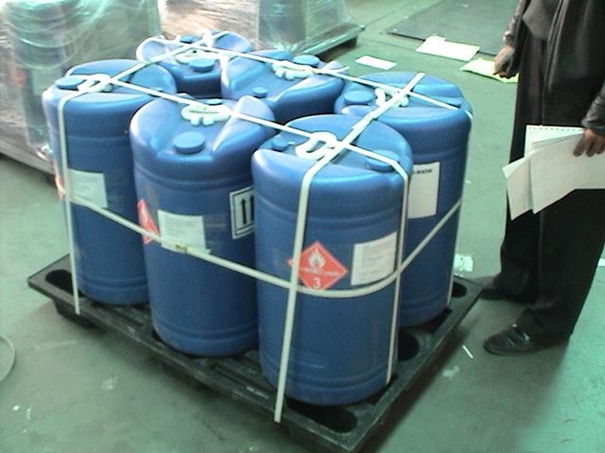Vanhang Service case for customs clearance of the dangerous cargoes
The release date:2021-11-12
Vanhang Service case for customs clearance of the dangerous cargoes.
Dangerous cargoes, due to their chemical, physical or toxic properties, are liable to cause fire, explosion or poisoning danger and may cause personal injury or death or property damage in the process of production, storage, loading and unloading or transportation. Obviously, this is the definition made from the nature of the article.

Relevant needed documents and processing
(Make it ahead before shipping the cargoes)
MSDS, Dangerous goods notes , Dangerous goods Chinese label
The Chinese label of dangerous goods shall be affixed before shipping the cargoes.
Communicate with the terminal in advance before berthing of dangerous goods (whether the terminal has the service of storing and transporting dangerous goods and whether the terminal can receive this type of cargo)
Note: 1. Some ports require dangerous goods to be qualified; 2. Some ports require dangerous goods to be inspected and transferred to dangerous goods warehouse at the destination. 3, Need dangerous goods vehicle to transport 4, If the dangerous goods is paint, it should be filed in advance record 5, dual-use items: need to apply for dual-use items permit in advance
Let's check below two simple cases for explanation :
There is a customer in Zhejiang province who wants to import a batch of chemicals for anti-corrosion and drying from South Korea. However, as it is their first time to import, they do not know much about the import of chemicals. When the goods were ready abroad and ready to ship, they were informed that Chinese labels were needed to be affixed. Because this chemical is not an ordinary chemical, but a category 9 dangerous goods, it needs to be labeled with Chinese and declare danger before arriving at the port. The shipping date from South Korea to China is relatively fast with short sail, so they don’t have much time left. We proceeded the label identification through urgent processing, and it took us two days to pass and one day to affix the Chinese label, saving unnecessary costs for the customer.
Notice: The cost of dangerous goods at the port is very high, the storage cost is five to ten times that of ordinary goods, and the cost at the port is also much higher than that of ordinary goods.
A batch of French paint needs to be imported to the domestic market for sale. The domestic order has been received, but it will take more than a month to import it from abroad by sea, so the customer chooses air transportation. Finished coating import is the need to deal with coating for the record approval, if there is no record approval is no way to import.
We recommend two solutions to our customers:
One solution is to import the paint according to the semi-finished product of the paint in large barrels, and import it to the country for reprocessing and re-packaging, so that it can be imported in accordance with the way of ordinary chemicals.
Another is in accordance with the import of paint, then deal with coating for the record, and got the receipts to declare, and do not put paint on the airport warehouse for more than a month, because paint for the record need about 45 days, it will generate costly storage charges, However, there will be a drawback with the receipt of declaration, he need to wait for paint to put on the customs record before the normal sale.
There are differences between ordinary chemicals and dangerous goods when they are imported to China. We need to classify them according to the information of goods, and then prepare the documents for customs clearance.
There are various types of dangerous goods. HS codes and customs supervision conditions must be determined for imported dangerous goods. Different types of dangerous goods will be involved with different documents, and the losses caused by improper handling of dangerous goods transportation are common occurance.